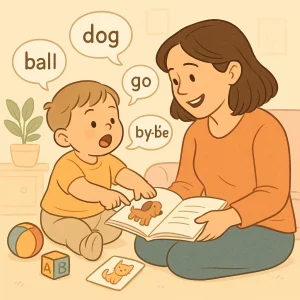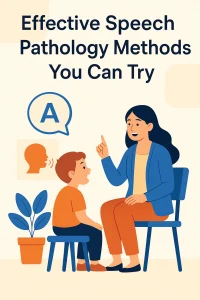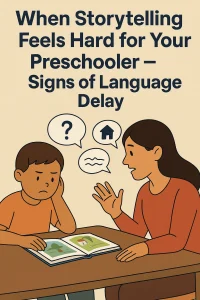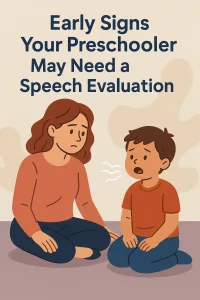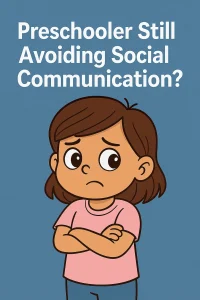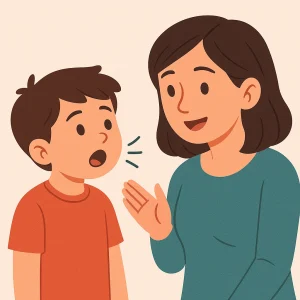Anomic Aphasia: Symptoms, Causes & Support That Helps
By Rajini D
Last Updated: April 10, 2024
Imagine you’re in the middle of a conversation, and suddenly, the right words just seem to vanish. You know what you want to say; you can even picture it, but the words are just out of reach. This experience, often described as having the words “on the tip of your tongue,” is a daily reality for those living with anomic aphasia. Anomic aphasia, a form of language disorder, significantly impacts an individual’s ability to communicate effectively, altering their quality of life and their interactions with the world around them.
At Wellness Hub, we understand the challenges faced by those living with anomic aphasia and their loved ones. That’s why we’re dedicated to providing you with a comprehensive yet easy-to-understand overview of this condition. Through this article, we aim to shed light on what anomic aphasia is, its causes, symptoms, and the paths towards managing and treating it. Whether you’re here for yourself, a friend, or a family member, we’re here to guide you through understanding anomic aphasia better, offering support and resources every step of the way.
Understanding Anomic Aphasia
What is Anomic Aphasia?
Anomic aphasia may sound like a complex term, but its essence lies in a challenge many of us have faced: struggling to find the right word. However, for individuals experiencing anomic aphasia, this struggle is not just occasional; it’s a persistent part of their daily communication.
In simpler terms, anomic aphasia is a type of language disorder that primarily affects a person’s ability to recall and use the correct words for objects, people, places, or events. It’s like having a vast library of words in your mind, but the pathway to access those words is blocked or obscured when you need them the most. This difficulty is not limited to speech; it extends to writing as well.
Imagine trying to tell a friend about a new movie you watched over the weekend, but you can’t recall the words “movie,” “actor,” or even the names of the characters. Instead, you find yourself describing it as “the thing you watch” or using broad gestures to convey your thoughts. That’s the reality for those living with anomic aphasia.
Also Read: The Early Years of Speech and Language
The Causes Behind Anomic Aphasia
Overview of Causes
While anomic aphasia can be a puzzling condition, understanding its common causes helps demystify it, shining a light on why it might occur. This knowledge is not just about scientific curiosity; it’s about understanding a condition that deeply affects communication and, consequently, the quality of life for many.
- Stroke
The most frequent culprit behind anomic aphasia is a stroke. When blood flow to a part of the brain is obstructed, it can lead to damage in areas responsible for language and speech. This isn’t just about losing words but about the pathways in the brain that help retrieve and use them correctly. Strokes can affect anyone, underscoring the importance of understanding their link to language disorders. - Brain Injury
Physical trauma to the head can lead to brain injuries with long-lasting effects, including difficulties with speech and language. Whether it’s from an accident or a fall, the impact can disrupt the brain’s language-processing areas, leading to anomic aphasia. This highlights the critical nature of protective measures and safety in preventing head injuries. - Neurological Diseases
Conditions that gradually affect the brain over time, such as Alzheimer’s disease or other forms of dementia, can also lead to anomic aphasia. These diseases can erode the brain’s ability to manage language and speech, making word retrieval a challenge. Understanding these conditions is key to grasping the broader spectrum of how anomic aphasia can manifest.
Read more: History of Autism: Unraveling Autism’s History
Recognizing the Symptoms
Identifying Symptoms
When someone has anomic aphasia, their world of words is like a puzzle where pieces constantly go missing. The primary sign of this condition is a noticeable struggle with finding the right words, particularly nouns and verbs, which are essential for clear communication. Let’s break down these symptoms in a way that’s easy to grasp, focusing on the everyday experiences of those living with anomic aphasia.
- Word-Finding Difficulties
The hallmark of anomic aphasia is difficulty in finding words. This isn’t just any momentary lapse; it’s a persistent challenge that makes it hard to name common objects, express thoughts clearly, or engage in conversations without frustration. It’s like reaching for a light switch in the dark, knowing it’s there but not being able to find it. - Substituting General Terms for Specific Names
Individuals with anomic aphasia often use general terms like “thing” or “that place” instead of specific names. This substitution happens not by choice but as a workaround to navigate their word-finding hurdles. It’s a creative but sometimes confusing way to keep the conversation going. - Circumlocution (Talking Around a Word)
Another common symptom is circumlocution, where the person describes an object or concept without naming it directly. For example, they might describe a “watch” as “the thing on your wrist that tells time” because the specific word eludes them. - Preserved Grammar and Comprehension
It’s important to note that anomic aphasia typically doesn’t impair grammar or the ability to understand others. People with this condition can usually construct sentences well and understand spoken language, making their word-finding difficulties even more pronounced by contrast. - Visible Frustration or Withdrawal in Conversations
The ongoing struggle to communicate can lead to visible frustration, withdrawal from social interactions, or a decrease in conversational participation. It’s not just the words that are missing; it’s the ease of connecting with others that’s disrupted.
Know more: Early Identification/ Warning Signs in child development
How Anomic Aphasia Affects Daily Life
Living with Anomic Aphasia: A Day in the Life
Meet Maya. Maya loves books and enjoyed a career as a librarian until anomic aphasia began to color her world differently. For Maya, every conversation is a mountain to climb, and she does not know if she’ll find the words to reach the summit. Here’s a glimpse into her day:
- Morning Routine: Maya’s day starts with coffee and a chat with her partner. But even “coffee” sometimes hides in the corners of her mind. She gestures towards the coffee machine, hoping her partner understands. It’s a small moment, but it sets the tone for her day—a reminder of the hurdles ahead.
- Work Challenges: Maya used to thrive on helping patrons find their next favorite read. Now, recommending books is a dance of descriptions and gestures as specific titles slip through her grasp. “The book with the blue cover about the sea,” she says, hoping her passion can bridge the gap her words cannot.
- Social Interactions: Lunch with friends is a battlefield of missing words. Maya wants to share a story about her weekend, but the word “museum” feels like it’s in another language. The conversation moves on, and with it, a piece of Maya’s confidence fades.
- Hobbies and Leisure: Reading is still a joy, but discussing her latest read in the book club feels daunting. “It’s about a woman…you know, she does the thing with the garden,” Maya attempts to explain. The plot is clear in her mind, but the words are locked away.
Communicating with Anomic Aphasia: The Emotional Toll
It’s not just the words that are missing; it’s the ease of connection and the spontaneity of conversation. Maya finds herself retreating, not for lack of interest or affection, but out of frustration and fatigue. Anomic aphasia has not just affected her ability to speak; it has reshaped her world.
Yet, within this new landscape, Maya finds new ways to express herself. Gestures, drawings, and even apps become tools in her arsenal. Her relationships adapt, built on understanding and patience. Every day is a journey through challenges but also a testament to resilience and the power of human connection.
Diagnosis and Testing
Navigating the Diagnosis Process
The question of “How is Anomic Aphasia Diagnosed?” often looms large for individuals experiencing word-finding difficulties and their families. The process involves a combination of clinical evaluations, detailed conversations about symptoms, and sometimes, imaging tests to look at brain function and structure. Here’s a step-by-step overview:
- Initial Evaluation:
The journey typically begins with a visit to a healthcare professional, often prompted by noticeable difficulties in finding the right words, either observed by the individuals themselves or their loved ones. This step is crucial for gathering a comprehensive history of symptoms and any precipitating factors, such as a recent stroke or head injury. - Referral to a Speech-Language Pathologist (SLP):
For a more in-depth evaluation, individuals are usually referred to a speech-language pathologist. SLPs are experts in communication disorders and play a pivotal role in diagnosing anomic aphasia. They conduct a series of tests to assess various aspects of language, including naming objects, engaging in conversation, understanding spoken and written language, and reading and writing skills. - Speech-Language Evaluation:
This evaluation is comprehensive. The SLP will engage the individual in different tasks designed to assess language abilities. One common test involves showing pictures of objects and asking the person to name them. Other tests may evaluate the ability to form sentences, understand conversations, and comprehend reading materials. These evaluations help to pinpoint the specific areas of language that are affected. - Imaging Tests:
While not always necessary, imaging tests like MRI or CT scans can be instrumental in diagnosing anomic aphasia, especially if the cause is believed to be a stroke, brain injury, or a neurological condition. These scans allow doctors to see detailed images of the brain, identifying areas that might have been damaged and contributing to language difficulties.
Treatment and Management Strategies
| Treatment Type | Description | Expected Outcome |
|---|---|---|
| Speech Therapy | Personalized sessions with a speech-language pathologist focusing on improving word retrieval skills. | Enhanced ability to find and use words and improved conversation skills. |
| Cognitive Therapy | Exercises and activities aimed at boosting cognitive functions like memory and attention. | Better overall cognitive function, which supports language use and comprehension. |
| Technology-Assisted Tools | Use of apps and devices designed to aid with language practice and communication. | Increased independence in communication and support for practice outside of therapy sessions. |
| Lifestyle and Wellness | Incorporation of physical exercise, healthy eating, and mental health support into daily life. | Improved brain health and stress management, contributing to better overall recovery and well-being. |
Supporting Someone with Anomic Aphasia
Creating a Supportive Communication Environment
- Practice Patience and Understanding:
Understand that the struggle to find words can be frustrating and disheartening. Showing patience and offering encouragement can make a significant difference in their confidence and willingness to communicate. - Use Simple, Clear Language:
Communicate using simple sentences and straightforward language. This doesn’t mean talking down to them but rather making the conversation more accessible. - Encourage Non-Verbal Communication:
Gestures, drawings, and facial expressions can be valuable tools for communication. Encourage the use of these alternative methods, which can help ease frustration and foster better understanding. - Limit Distractions:
Reduce background noise and distractions during conversations. This helps the individual with aphasia concentrate better on the communication at hand. - Confirm Understanding:
Use yes/no questions or ask for simple clarifications to ensure you’ve understood their message correctly. This can also empower them to correct any misunderstandings without the pressure of finding specific words. - Focus on the Present Conversation:
Give them your full attention during conversations. This shows respect and value for their efforts to communicate, boosting their self-esteem and motivation.
Communication Tips for Families and Caregivers
| Strategy | How to Apply |
|---|---|
| Use Simple Language | Speak using straightforward and concise sentences. Avoid complex vocabulary that may be difficult for the person to process. |
| Encourage Non-Verbal Communication | Pay attention to facial expressions and body language, which can provide additional context for what they are trying to communicate. |
| Limit Distractions | Create a quiet and focused environment for conversations by reducing background noise and visual clutter. |
| Confirm Understanding | Use yes/no questions or ask them to repeat the information in their own words to ensure messages are understood correctly. |
| Be Patient | Allow them time to speak without rushing them, showing that their efforts are valued and encouraging their attempts to communicate. |
| Focus on Non-Verbal Cues | Slow down your speech rate and emphasize keywords to make it easier for them to follow the conversation. |
| Modify Your Own Speech | Slow down your speech rate and emphasize key words to make it easier for them to follow the conversation. |
| Use Writing and Visual Aids | For complex ideas, consider writing them down or using pictures and symbols to aid understanding. |
Explore more: Understanding & Parenting an Autistic Child: Guide & Tips
Support Beyond Words
- Educate Yourself and Others:
Learn about anomic aphasia and share your knowledge with friends and family. Understanding the condition can lead to more empathetic and supportive interactions from everyone involved. - Seek Professional Support:
Consider joining support groups or seeking counseling for both you and your loved one. These resources can provide additional coping strategies and emotional support. - Celebrate Small Victories:
Acknowledge and celebrate progress, no matter how small. This can be incredibly motivating and uplifting for someone working hard to improve their communication skills. - Encourage Independence:
Encourage activities and hobbies that they can enjoy and participate in, which can also aid in their recovery and maintain their sense of self. - Plan for the Long Term:
Recognize that recovery and adaptation is a long-term process. Setting realistic goals and celebrating milestones can help maintain a positive outlook.
Conclusion
As we wrap up our discussion on anomic aphasia, let’s remember the main points we’ve covered. Anomic aphasia makes finding the right words tough, affecting not just talking and writing but also confidence and social life. We’ve looked into what causes it—like strokes and injuries—and how recognizing it early can make a big difference. We also discussed the symptoms, like struggling to name things, and shared ways to help manage the condition, such as speech therapy and support from loved ones. It’s all about taking small steps towards improvement and understanding that help is always available.
Here at Wellness Hub, we’re dedicated to being a part of your journey with anomic aphasia. We provide resources, support, and a community that understands exactly what you’re going through. Remember, every small step forward is a win, and you’re not alone. Whether you’re looking for strategies to communicate better or just need someone to talk to, Wellness Hub is here for you. Together, we can face the challenges of aphasia, focusing on hope and the many possibilities ahead.
Frequently Asked Questions:
1. What is Anomic Aphasia?
Anomic aphasia is a communication disorder that significantly impairs a person’s ability to recall and use the correct words, particularly nouns and verbs, making conversation challenging. It affects speaking and writing but does not diminish intelligence or cognitive abilities.
2. What Causes Anomic Aphasia?
This condition typically results from brain damage due to strokes, traumatic brain injuries, or neurological diseases like Alzheimer’s, which affect the brain’s language-processing regions. It disrupts the normal retrieval of words, impacting communication.
3. How is Anomic Aphasia Diagnosed?
Diagnosis involves a detailed assessment by a speech-language pathologist through language skill tests and may be supported by brain imaging techniques like MRI or CT scans to identify the areas of brain damage contributing to aphasia.
4. Can Anomic Aphasia Be Treated?
Yes, through targeted speech therapy, cognitive exercises, and support, individuals with anomic aphasia can improve their language abilities. Personalized treatment plans focus on enhancing communication skills and adapting to challenges.
5. How Can I Support Someone with Anomic Aphasia?
Support includes practicing patience, simplifying conversations without reducing complexity, encouraging non-verbal communication, and minimizing distractions to aid understanding and expression, fostering a positive communication environment.
6. Are There Any Effective Communication Strategies for Anomic Aphasia?
Yes, strategies like using gestures, drawing, simplifying speech, and employing technology aids can significantly improve communication. Confirming understanding through questions and being patient is key to effective interaction.
7. Where Can I Find Resources and Support for Anomic Aphasia?
Resources and support are available through platforms like Wellness Hub, offering access to educational materials, support groups, and expert advice to help individuals with aphasia and their families navigate the condition more effectively.
8. How Long Does Recovery from Anomic Aphasia Take?
Recovery time can vary widely among individuals, depending on the severity of the brain injury and the specific treatment approaches used. While some may see significant improvements within months, others may experience a more gradual recovery process over the years. Continuous speech therapy and support can lead to ongoing improvements.
9. Can Anomic Aphasia Worsen Over Time?
In cases where anomic aphasia is caused by progressive neurological conditions like Alzheimer’s disease, symptoms may worsen over time. However, for many affected by stroke or traumatic brain injury, the condition can stabilize or improve with appropriate interventions and continuous practice.
10. Are There Any Lifestyle Changes That Can Help with Anomic Aphasia?
Yes, adopting a healthy lifestyle can support recovery and management of anomic aphasia. Regular physical exercise, a balanced diet, mental stimulation, stress reduction techniques, and active social engagement can contribute positively to brain health and overall well-being, potentially aiding in the recovery process.
About the Author:
Rajini Darugupally
M.Sc., Speech-Language Pathologist (9+ years of experience)
Rajini is a passionate and dedicated Speech-Language Pathologist with over 9+ years of experience, specializing in both developmental speech and language disorders in children and rehabilitation in adults. Driven by a desire to empower each individual to find their voice, Rajini brings a wealth of experience and a warm, genuine approach to therapy.
Currently, at Wellness Hub, she thrives in a team environment that values innovation, compassion, and achieving results for their clients.
Connect with Rajini to learn more about how she can help you or your loved one find their voice.
Book your Free Consultation Today
Parent/Caregiver Info:
Client’s Details:
* Error Message


